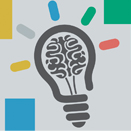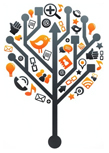

When you begin with a new project, and try to validate a product idea through testing, you are actually far away from proper usability testing. Well, ideally it would be best to let your users know that the product is being tested and not them, regardless of the stage the product is in.
This, is perhaps one of the reasons these sessions are often not referred to as usability or user testing, but rather product testing.
Let’s explore through this post some of the essential guidelines that will not only help teams building the product, but also anyone who has new product ideas and plans to validate them.
Well, there are numerous aspects that you need to keep in mind when planning and conducting product testing, here are a few points that will help you to focus better:
- Begin testing from the very first week of the project
- Go beyond usability testing
- Assign five users for each target group
- Understand that testing is a continuous process
- Don’t miss out on the details
Reduce Product Testing Efforts, Time and Costs
1. Begin Testing From the Very First Week of The Project
As a service provider, we initiate a new project with a short research phase, which is followed by a hands-on workshop. These workshops are very effective, especially when beginning with a new initiative, testing new features, ideas, etc. We close the workshop by building a medium fidelity prototype (using tools such as Sketch), which is tested by users.
This way we validate the strategy we are to adopt from the very beginning. Can you imagine how rewarding this can be? If you begin testing from the very first week of the project, you will have the concept ready along with business case as well as real feedback from customers. What a great way to begin with a project, isn’t it?
2. Go beyond Usability Testing
As the project evolves with time, your priorities need to change accordingly. You might initiate the project by extensively focusing on validating the initial product idea and prioritizing the features, but as you move forward, you should focus less on these areas and more on how things can be brought together.
Let’s find out how the testing focus shifts as the project progresses:
- Concept
Validating the product idea with the preferred target audience.
- Features
Prioritizing features particularly when developing Minimum Viable Product (MVP).
- Information Architecture
Testing numerous methodologies to information architecture.
- User Flow
Understanding how the proposed flows impact user experience as well as behavior.
- Visual Design
Performing a series of tests associated to visual design, tone, branding, readability, etc.
3. Assign Five Users for Each Target Group
You must be already aware of this. Five users in a testing session is sufficient to get majority of feedback required.
It is important to note though that the above fact stands true when you have five users for each target group, which means if you have both primary and secondary type users, you will be required to multiply that number.
It is advised that you choose people matching your personas and then screen them for traits, goals and attitudes matching those that of your users.
4. Understand That Testing Is a Continuous Process
It is imperative for the entire development team to realize that initial concept testing is by no means enough. Even if your project is in progress, you should still have regular testing sessions in place since the designs evolve, and many new features are added till creation of final UX prototype and actual development. It is crucial to guide these tests towards desired goals.
For example, when testing the product in the visual design phase, it is imperative for the test to focus primarily on aspects directly related to this phase. Yes, it is common to receive feedback related to other aspects that you might not be testing at the moment such as user experience, engagement level, etc., you can perhaps benefit from the feedback and modify the product roadmap accordingly.
5. Don’t Miss Out On the Details
God lies in details. You might see completely different testing results when one or more of details are not executed properly. It’s imperative to retain the story you are telling to users to keep them engaged and not to break the flow.
Your users’ needs to stay in the shoes you’ve asked them to put on.
- Use actual content in your prototype
The users you choose for testing define your target audience, they have similar habits and traits as your target users, hence they will surely be looking at the content used in your prototype and may sometimes be blocked by errors or technical gaps.
- Know your flow
You need to effectively guide your users through a path, without them having to figure out where they are in the flow; for instance how many screens left to scroll through, etc. In order to guide users effectively, you need to have a mental map of the flow in your head, especially for times when things do not go as planned. Understand the primary focus of each screen so as to validate the study goals effectively.
- Know your hardware
Prepare yourself for success and don’t let hardware issues pull you down.
- Know your software
Behind the scenes interactions and prototypes can at times conflict with the desired results for users. For example —swipe on mobile is interpreted in prototyping software as navigate to next screen instead of interacting with the screen as desired. Yes, you might have envisioned the user flow in a certain way however this simple feature has the potential to disrupt the entire navigation. So, take this into consideration when creating an ideal setup.
At the End of the Day
Zero users will provide zero insights and this is true for every project. So if you are designing a product, it is important that you do product testing as well.
If you need any help in the process, please write to us at info@suntecindia.com. Reduce test efforts, time and costs with our Software Product Testing Services across the product lifecycle.

